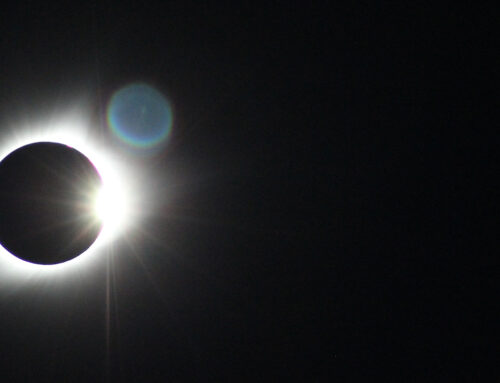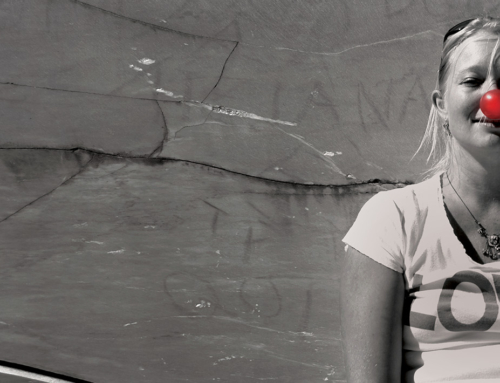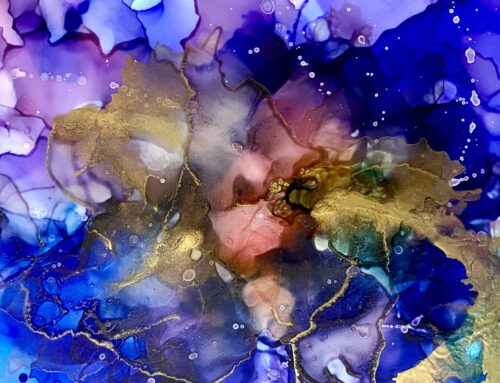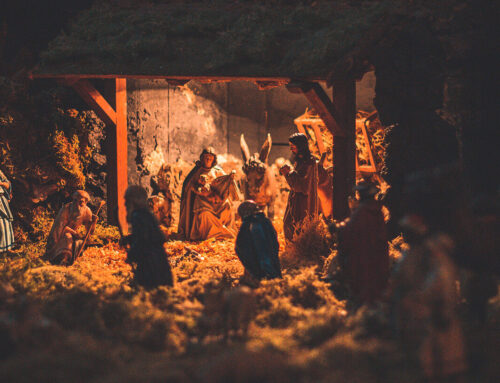The other day I was talking with a friend who lives in Germany. It was already nightfall for her and she was sharing with me the beauty of their first snowfall this season. She described the scene outside her window with such clarity, that I couldn’t help but close my eyes and imagine it for myself. As she described the lights, the Weihnachtsmaerkte (German Christmas Village), and all the houses looking cozy and inviting, like a refuge from the cold, the 5,000 miles that separated us disappeared.
Not only could I see myself in the picture she was painting, like memories from my own lifetime, but I could feel the Christmas myth come alive. I imagined the warm lights of decorations on the streets and houses, the fireplaces glowing in windows, and a million stars up above smiling down on my world. All this light, everywhere present rescuing me from the darkness, like a beacon of hope for tomorrow. Is this not the ancient thread that keeps the Christmas story alive?
This archetype of light in our darkest times is as old as humankind. Thousands of years before Jesus was born, the return of the sun from the winter solstice was celebrated as re-birth in many cultures. Oftentimes the stories of the return of the sun included the birth of a divine child. The hope of light in the darkness is central to the Christian celebration of Christmas, as well as most spiritual traditions. Regardless of who is telling the story, whether we are singing it, reading scripture, or watching The Little Drummer Boy for the 83rd time, the setting of Jesus’ birth is in the middle of the night, at the darkest and coldest time of the year.
Two billion people around the world celebrate December 25th as one of the holiest of Christian holidays; and while there is nothing historical about this date as Jesus’ birthday, it is also not an arbitrary date. It was chosen by Pope Julius in the mid-4th century in order to integrate Christian life into the Roman festivals taking place. Remember, Christianity at this time was still very much a part of the Roman Empire, and even used some traditional Roman religious practices, like sun worship.
‘Pope Julius adopted the Roman winter solstice festival, “Birthday of the Unconquered Sun,” and in time it became the Christian birthday of “the son,” making December 25th a symbol of hope for things to come, a light in the darkness.The stories of the first Christmas in the Gospels of Matthew and Luke are rich with imagery of light. The writer of Matthew gives us the star of Bethlehem shining in the night sky guiding the wise men. The writer of Luke paints a picture of the dark night filled with radiant light from the multitude of angels bringing the good news to the shepherds. Light is central in every spiritual tradition, and in the ancient world heavenly light often foretold the coming of a great person.
Light is an ancient archetypal symbol, imprinted on our consciousness from ancient times. Imagine for a moment how our ancestors experienced light – in many ways, vastly different from today. They would have had no artificial lighting, not even candles until very recently in human history. Nighttime would have been darker than we can even imagine, so dark that they would have seen heavenly bodies we can only dream of in our sleep. Our own hand would not have been visible if we held it only inches from our face.
Our ancestors knew night and darkness in ways we can probably never know, and the light became the hope of life, literally a guarantee that life would continue if you saw the sun peaking over the horizon. And so dark and light have become our constant companions. In the darkness we can’t see, we stumble and fall, we may even lose our way. It is here we are most afraid because it touches our deepest inner terror – where things go bump in the night. Danger and evil lurk around every corner. Yet this journey of dark is earth’s life cycle, with winter and darkness going hand-in-hand. No more warmth, only unconsciousness and sleeping.
This is the setting in which our Christmas birth stories were written. Is it any wonder that light has come to mean so much to us? Is it any wonder that we yearn for the rich and beautiful language of light – luminous, blazing, glowing, illuminating, radiant, sparkling twinkling, shining, brilliant, awakening, enlightened… Light is deep within us as the symbol of what is most sacred, divine and alive. Yet we can’t know it fully unless we also know the dark.
This is the story of our own birth, out of the darkness and into the light – and not once a year, but everyday. The “darkest, coldest night of the year” happens for all of us in different ways. If we are to truly embrace the Christmas story, we must be willing to enter into the darkness, to die a little every day so that something more authentic can be born.
New life comes from a death, from the darkness that we fear so much. In those darkest corners lies our shadow, those unloved and unlived pieces of ourselves we have been avoiding or ignoring. These are our demons, our ghosts and the unknown, that sometimes are so dark, we can’t see through them, much like our ancestors experienced the night. This is why it is so important to turn and face that which we fear. For in so doing, we make friends with it, we make peace with what scares or angers us, and with our deepest pain, and we bring ourselves into the light once again.
What has been in the dark, we bring forth into the world, integrating it, and emerging with a renewed sense of wholeness, a renewed sense of hope. We emerge more bright and shiny, as a new life that is a lamp unto the world, healing ourselves, healing others, uplifting and empowering every person desiring light in their darkest days.
If we truly dare to enter the darkness, enter the solitude of our soul, and are willing to risk embracing those things that are hidden, then our Christmas story becomes one for the whole world. It’s not just about one baby born in a manger or wise men trekking across the desert 2,000 years ago, but one that is a story we imagine each day, just as I imagined the snowy village outside my friend’s window. We imagine a story and then over and over again we birth our lives from our fears and our joys, from our dreams and our deepest desires, from the infinite possibilities that shine down on us just like the stars at night have done from the time our ancestors.
Why practice the Christmas story once a year? Let’s expand our light every day, in ever-increasing wider circles and in ever-increasing ways so that the true meaning and myth of Christmas is lived out through the divine light of our humanity with wisdom, compassion and great joy. YOU are the reason for the season!





